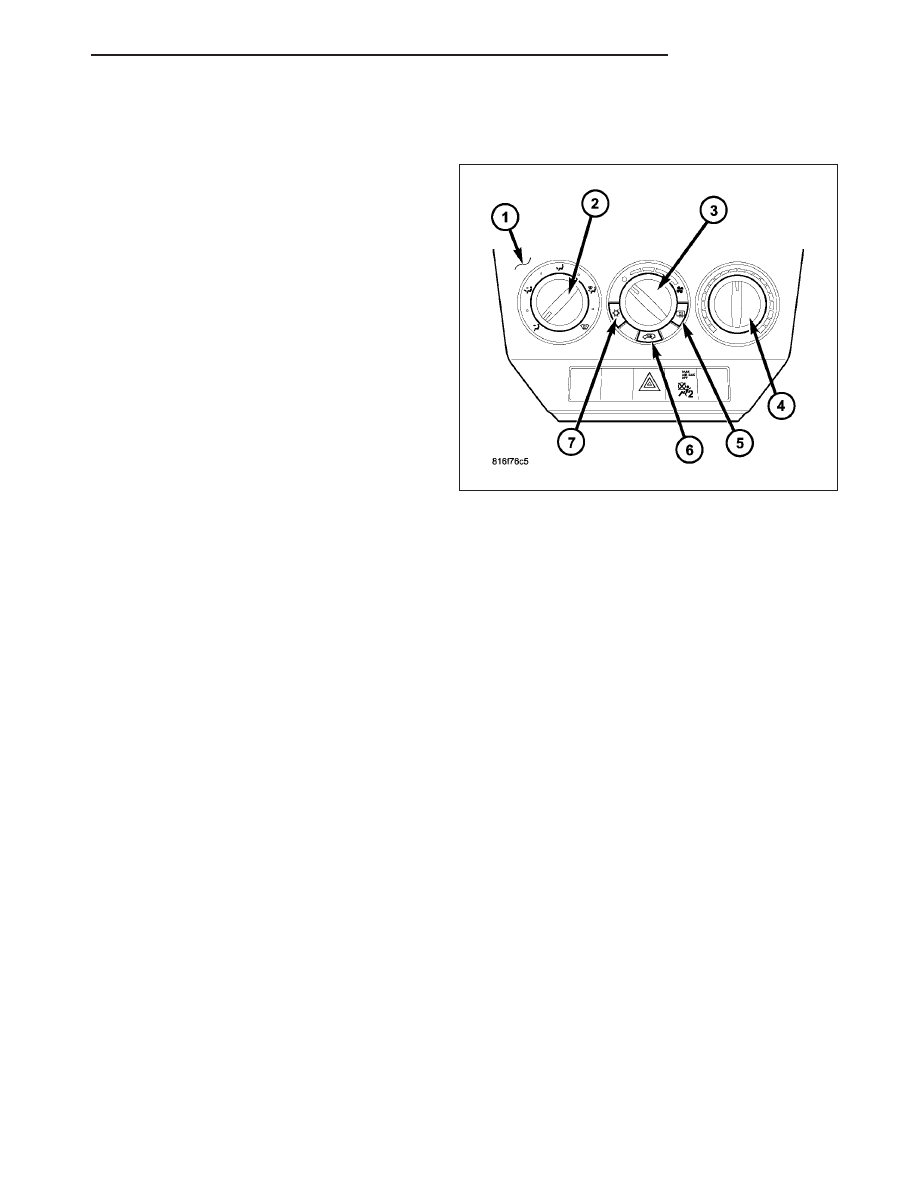Content .. 1411 1412 1413 1414 ..
Dodge Caliber. Manual - part 1413

CONTROL-A/C HEATER
DESCRIPTION
NOTE: Typical A/C-heater control shown.
The A/C-heater control (1) for the manual temperature
control (MTC) single zone system allows one temper-
ature setting for the entire vehicle. All controls are
identified by ISO graphic symbols.
The heating-A/C system uses a combination of electri-
cal and cable operated controls. These controls pro-
vide the vehicle operator with a number of setting
options to help control the climate and comfort within
the vehicle.
The A/C-heater control is located in the instrument
panel and contains:
•
a rotary control for mode control of the dis-
charged air (2).
•
a rotary control for blower motor speed selection
and to turn the blower motor off (3).
•
a rotary control for temperature control of the dis-
charged air (4).
•
a push-button control to turn the rear window defogger system on and off (5).
•
a push-button control for recirculation control of the discharged air (6).
•
a push-button control to turn the A/C system on and off (7).
The A/C-heater control cannot be repaired and, if faulty or damaged, it must be replaced. The control knobs for the
A/C-heater control are available for service replacement.
REMOVAL
WARNING: Disable the airbag system before attempting any steering wheel, steering column, or instrument
panel component diagnosis or service. Disconnect and isolate the negative battery (ground) cable, then wait
two minutes for the airbag system capacitor to discharge before performing further diagnosis or service.
This is the only sure way to disable the airbag system. Failure to take the proper precautions could result
in accidental airbag deployment and possible personal injury or death.
NOTE: Typical A/C-heater control and center bezel shown.
PM
CONTROLS
24 - 69